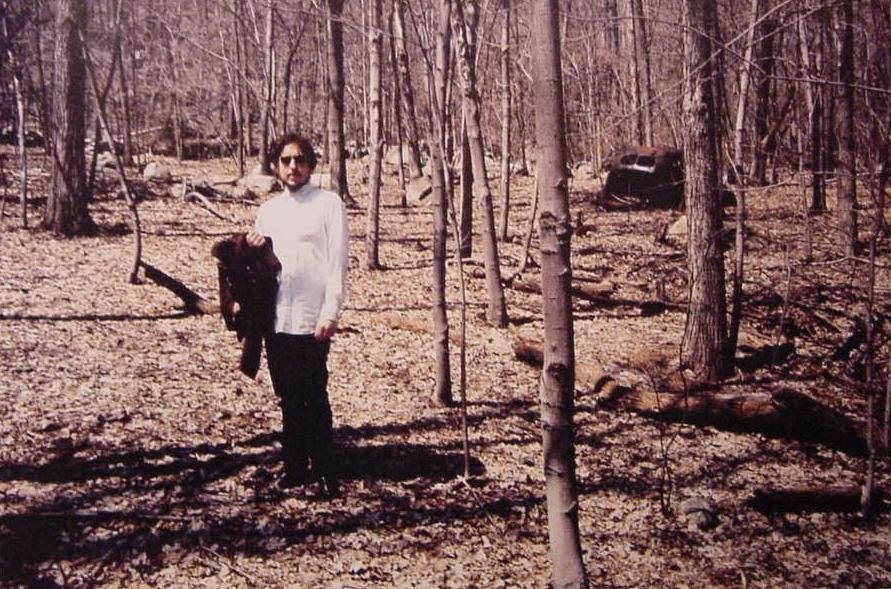Part 1: Reviewing the Carefree Period
As noted earlier, between 1967 and 1974, Bob Dylan's songs took a left turn and went around the bend, disappearing in the trees only to emerge stripped down to their basic natures: country, folk, and roots-rock. Dylan exhaled rural and family life in many of these "carefree" songs that cared less about beat poetry and rock n' roll. Here are the twelve best tracks from this period, listed in the sequence they are best listened to in:
1. "New Morning"
This song takes the roadhouse blues sound of Howlin' Wolf, strips it down, lightens the load, and delivers an uplifting, spirit-rising song about the magic of new beginnings. Images of rural life abound, as roosters crow and motors turn while Bob drives home an impassioned yet laid-back vocal. In much of the song, we not only hear some tasteful acoustic picking, but a sweet sounding organ that mimics the hum of the forest. There's something about the way Bob sings "automobile come into style/ coming down the road for a country mile or two" that encapsulates the song nicely. He mean's it-what he's singing about is important to him, but he also knows he's not hitting any dark edges or exploring any deep woods.
2. "Time Passes Slowly"
You almost get the feeling that Bob wrote this song in a few minutes. It's incredibly carefree, as a piano meanders somewhere, an electric guitar throws out a few licks, and a melody finds it's way into the song like a steadily moving stream. Bob, vocally, hits a few highs here that are endearing: he tried, and he sings in such a way as to suggest that he's belting this out for better or for worse. Up front, and leaving no doubt, Bob tells us where he's at in his life on this one.
3. "Watching the River Flow"
This is one of the great tracks of this era, yet it never found proper release on an album, and for good reason. It's electric, plugged in sound doesn't really fit the vibe of any of Dylan's releases during this period. This song is straightforward country blues, perfectly textured down to the vocal nuances and inflections Bob is able to pull off, here. At the start, we hear a nice guitar walk-up before the band locks into gear, and Bob sings "What's the matter with me?/ I don't have much to say" followed by a few pounds on the piano keys. Here, Bob's lines certainly seem to address the expectation that he be some kind of spokesperson.
Reviews to Come:
4. I Shall be Released
5. You Ain't Going Nowhere
6. Father of Night
7. Tonight I'll be Staying Here With You
8. This Evening So Soon
9. Blue Moon
10. When I Paint My Masterpiece
11. Down Along the Cove
12. If Not for You (alternate version)
 |
| Bobby's upstate |
This song takes the roadhouse blues sound of Howlin' Wolf, strips it down, lightens the load, and delivers an uplifting, spirit-rising song about the magic of new beginnings. Images of rural life abound, as roosters crow and motors turn while Bob drives home an impassioned yet laid-back vocal. In much of the song, we not only hear some tasteful acoustic picking, but a sweet sounding organ that mimics the hum of the forest. There's something about the way Bob sings "automobile come into style/ coming down the road for a country mile or two" that encapsulates the song nicely. He mean's it-what he's singing about is important to him, but he also knows he's not hitting any dark edges or exploring any deep woods.
2. "Time Passes Slowly"
You almost get the feeling that Bob wrote this song in a few minutes. It's incredibly carefree, as a piano meanders somewhere, an electric guitar throws out a few licks, and a melody finds it's way into the song like a steadily moving stream. Bob, vocally, hits a few highs here that are endearing: he tried, and he sings in such a way as to suggest that he's belting this out for better or for worse. Up front, and leaving no doubt, Bob tells us where he's at in his life on this one.
3. "Watching the River Flow"
This is one of the great tracks of this era, yet it never found proper release on an album, and for good reason. It's electric, plugged in sound doesn't really fit the vibe of any of Dylan's releases during this period. This song is straightforward country blues, perfectly textured down to the vocal nuances and inflections Bob is able to pull off, here. At the start, we hear a nice guitar walk-up before the band locks into gear, and Bob sings "What's the matter with me?/ I don't have much to say" followed by a few pounds on the piano keys. Here, Bob's lines certainly seem to address the expectation that he be some kind of spokesperson.
Reviews to Come:
4. I Shall be Released
5. You Ain't Going Nowhere
6. Father of Night
7. Tonight I'll be Staying Here With You
8. This Evening So Soon
9. Blue Moon
10. When I Paint My Masterpiece
11. Down Along the Cove
12. If Not for You (alternate version)
Comments
Post a Comment